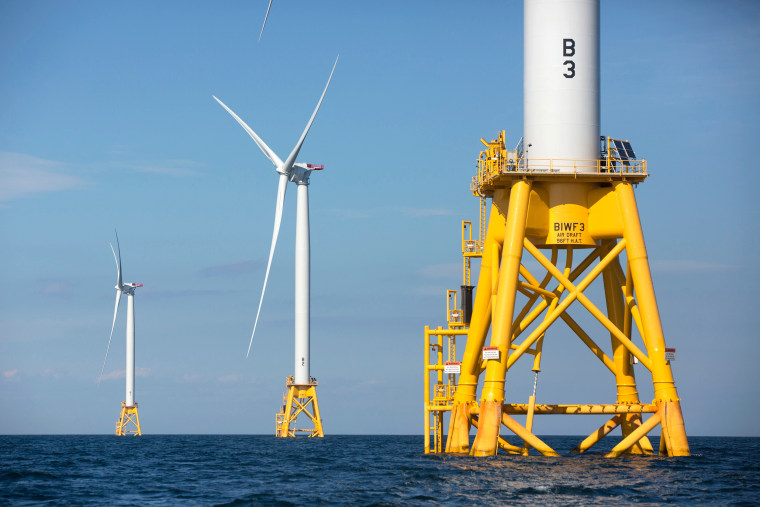
Wind power generated more electricity than coal in the U.S. in March and April, a sign that the setbacks offshore wind faced last year have not halted the industry’s broader momentum.
Though the U.S. Energy Information Administration predicts these standings will fluctuate, the energy generated by coal has steadily declined since 2008 while wind power has increased.
Massive turbines that harness wind to generate electricity have become an increasingly common sight in the U.S. and off its shores, though not without some challenges. Economic circumstances, long approval processes and misinformation have put pressure on offshore wind companies, and at least six companies have canceled or renegotiated contracts for new projects.
A Donald Trump presidency could also promote greater use of fossil fuels, which could slow the growth of offshore wind as well.
“Even with the hiccups, there should be forward movement in offshore wind. Even in a Trump administration,” said Barbara Kates-Garnick, a professor of practice at the Fletcher School at Tufts University in Massachusetts, who studies clean energy technology and energy policy.
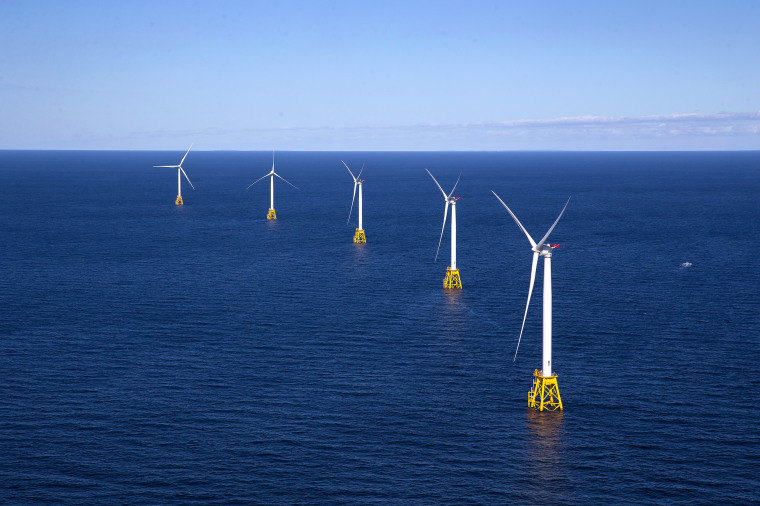
The U.S. has more than 74,500 wind turbines, and about 3,000 new turbines have been built every year since 2005. Wind power remains a relatively small part of broader U.S. energy production — 10.2% in 2023, according to the Energy Information Administration — behind natural gas (43.1%) and nuclear (18.6%), but makes up almost half of all renewable energy production.
Developing more wind power has been touted as a major part of the multipronged renewable energy push meant to put the U.S. on track to reduce its reliance on fossil fuels. Offshore wind has been a crucial part of those efforts because it has more potential to generate energy than onshore wind. Offshore projects are usually larger, and ocean winds tend to be stronger.
But offshore wind development has faced the biggest hurdles. The same economic issues that people all over the world have felt, such as rising inflation rates and a recovering supply chain after the pandemic, have hindered the development of offshore wind, Kates-Garnick said.
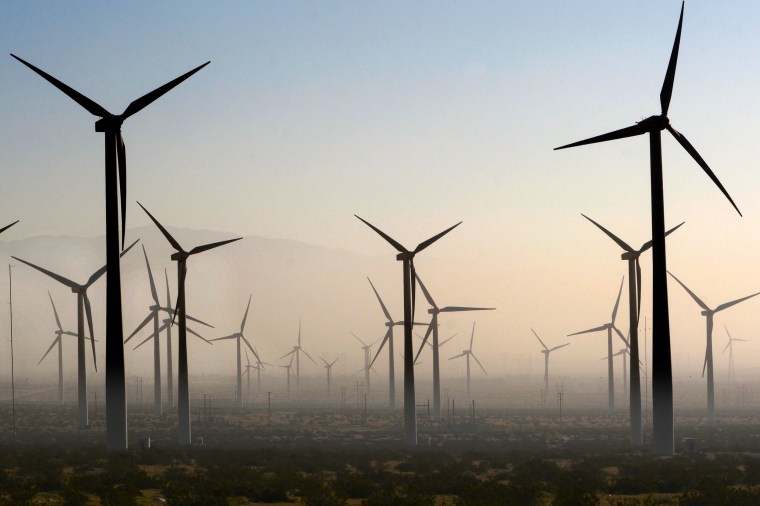
Avangrid, a sustainable energy company that runs the largest operating offshore wind farm in the U.S., canceled two projects last year in Connecticut and Massachusetts. Pedro Azagra, the CEO of Avangrid, said the company exited contracts for those projects because the state of the economy made the price of development too high.
“Those issues are getting better, but they are still there,” he said, adding that the economy affects other industries too.
Ørsted, a Danish renewable energy company that owns and operates America’s first offshore wind project, renegotiated a contract with New York for a wind project off the state’s shores in February after facing economic pressures, said Maddy Urbish, the head of public affairs for the Americas region at Ørsted. The company in 2023 canceled two projects in southern New Jersey.
“While we have definitely seen challenges, we’ve also seen real resilience” Urbish said.
Ørsted expects the company and others across the industry to expand with growing bipartisan support for renewable energy and an increasing demand for electricity, Urbish said. The EIA predicts that electricity demand will be 2% higher in the second half of 2024 than it was during that same period in 2023.
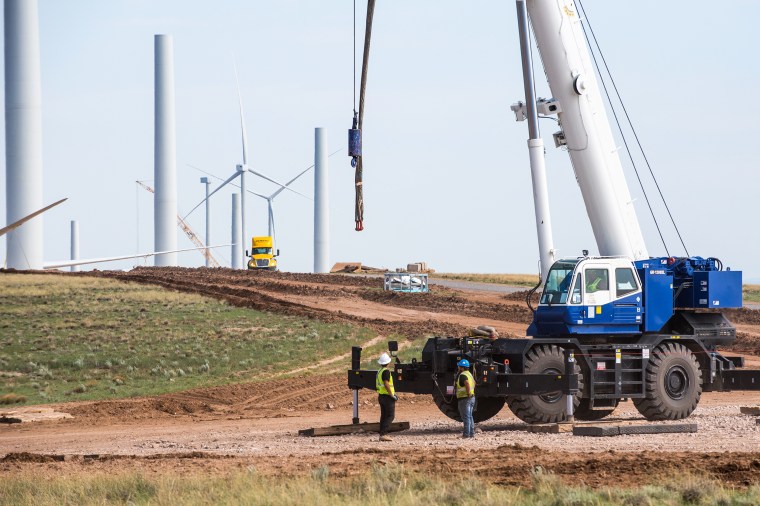
In addition to economic stress, offshore wind projects face both federal and state regulations because they have to get approval from the Bureau of Ocean Energy Management, said Joshua Basseches, an assistant professor of environmental studies and public policy at Tulane University in Louisiana. Onshore projects only deal with state regulations, making the development of offshore projects slower than onshore ones, he said.
Misinformation about the impact offshore wind turbines have on the environment could also make people less likely to support new projects. Trump has said that whales are harmed by offshore wind turbines, though no evidence supports that claim.
“A new federal administration that takes that misinformation and gives it an official standing or platform would be very dangerous for the future of offshore wind,” Basseches said.
But Basseches said a new administration won’t kill the momentum. As wind energy becomes less expensive, “coal will continue to be retired and constitute a smaller and smaller share of our total electricity generation, and I think that will be the case regardless of whatever happens politically.”
Kates-Garnick said that the states see offshore wind as an opportunity for economic development, so no matter what happens in November, she predicts that they will continue supporting offshore wind long term.
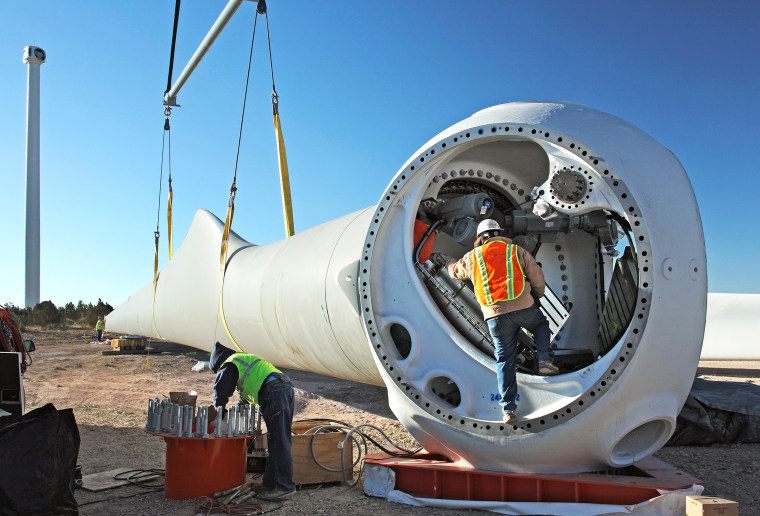
The clean power industry in the U.S. is projected to invest $65 billion in offshore wind projects by 2030 and create 56,000 jobs, according to a report from American Clean Power, a group of renewable energy companies.
“Relative to Europe, it’s fair to say it’s struggling, but I think that the amount of progress that’s been made since the Biden administration has taken office is nothing short of incredible,” Basseches said.
The first offshore wind farm in the U.S., the Block Island Wind Farm in Rhode Island, was completed in 2016. It came 25 years after the first offshore wind farm in the world, Vindeby in Denmark, finished construction in 1991.
“We’re in the process of rapidly catching up,” he added.
















